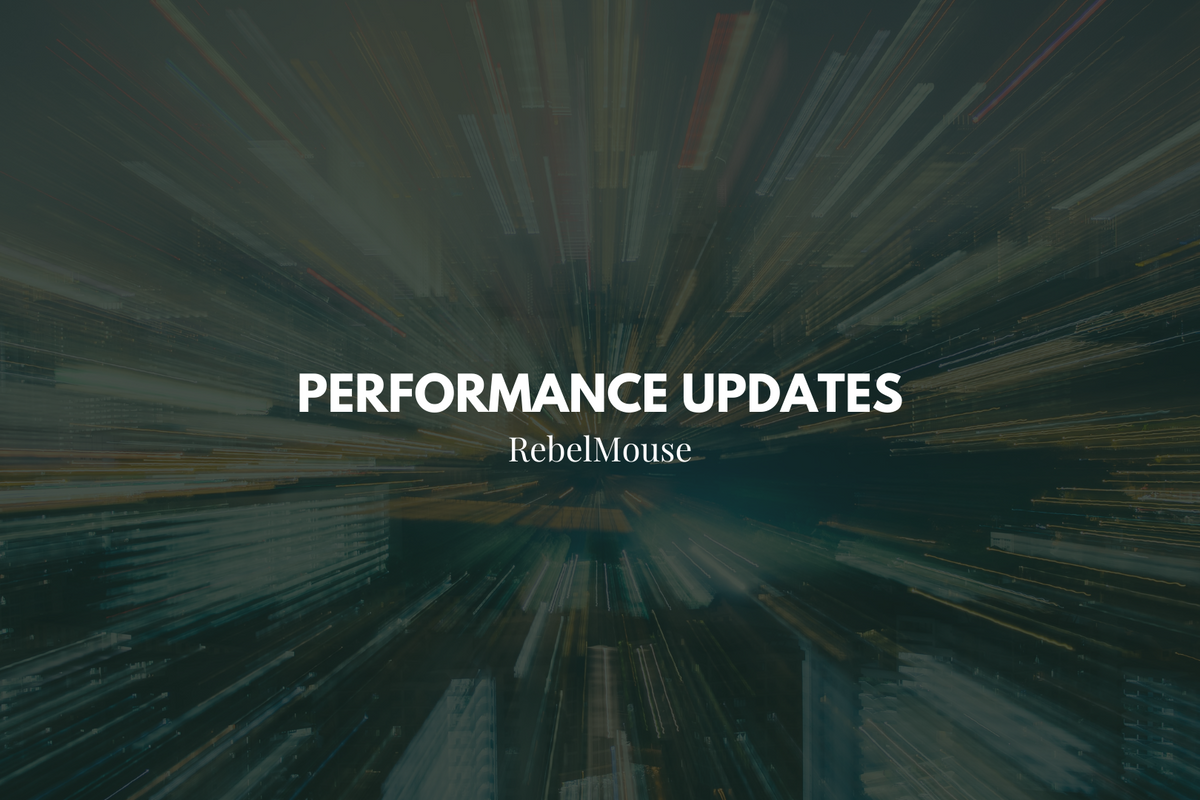
A look into some of our latest performance upgrades
Content deliverability is what will define a successful publisher in 2021. After the tumultuous year that was 2020, audiences will only tolerate quality content, and they will only consume it on a site that provides a next-level experience.
With users in mind, Google continued on its trajectory of prioritizing user experience in 2020. Six months after announcing Core Web Vitals in May, Google said its page experience signals will officially roll out and begin impacting search rankings in May 2021. The page experience signals include Google's Core Web Vitals and existing search signals. Together, these will determine a website's page experience and overall site performance. Click here to learn more.
Page experience signals will drastically impact every site's search engine optimization strategy. At RebelMouse, we've been preparing for these types of changes for years. Here are just some of the platform updates that we've launched to help your site meet Google's latest standards.
Optimizations for Cumulative Layout Shift (CLS) and Largest Contentful Paint (LCP)
Google's prioritized three metrics, grouped together as Core Web Vitals, that can be tracked and evaluated specifically using Google Search Console. These metrics include Cumulative Layout Shift (CLS), Largest Contentful Paint (LCP), and First Input Delay (FID). Click here for a full breakdown of what each one of these metrics mean.
Since Google's page experience signals could make or break your search strategy in 2021, we've been making upgrades to ensure that your site scores high against Core Web Vitals' measurements, particularly CLS and LCP. Here's what's new:
-
Compressed Images: RebelMouse already uses state-of-the-art,
next-generation image
management solutions. Because of this, we were able to upgrade our platform to support progressive image loading. This means that images on your site load instantaneously with a lower resolution that progressively improves as the page loads completely.
- There is no change in human-perceived image quality, and we're able to shave 15–30% from an image's file size.
- Lead media images are now a fixed size.
- The change to compressed images are platform wide and will require no additional work from you.
Lazy-Loading Font Improvements
Throughout the year, we've analyzed different ways to move the needle on Largest Contentful Paint (LCP). In many cases, we've found that site slowdowns were caused by custom fonts. The fastest fonts are Google Fonts, but they can slow sites down, too.
We've figured out an approach that makes it simple to lazy load all of the fonts that aren't used in the first view of a screen. This has resulted in a drastic improvement for our clients that were losing 10–30 performance points on complicated font integrations.
- This upgrade requires some updates to be done on your site using our Layout & Design Tool.
- This upgrade has the potential to improve LCP scores significantly for all sites using custom fonts.
Click here to read how it works.
Deferred Lazy Script and Style Elevation
This update will be released in two phases, and will help improve LCP scores significantly. The first phase will require explicitly moving elements to a new priority level in our Layout & Design Tool. After testing that this change doesn't cause any unexpected issues with different JavaScript libraries, we plan to roll this out to the full platform so that it's enabled by default.
Reordered Document Object Model (DOM)
The Document Object Model (DOM) is your site's HTML in a tree-like structure . Recently, we optimized our front-end code to continue to have a smaller codebase that loads site elements only when needed. This pushes lots of functionality to the bottom of the DOM tree. This change should help significantly improve LCP, Time to Interactive (TTI), and overall page performance scores.
If you have any questions about these site updates, email suppport@rebelmouse.com or contact your account manager today.















































































